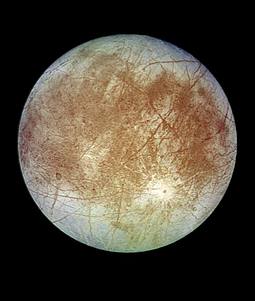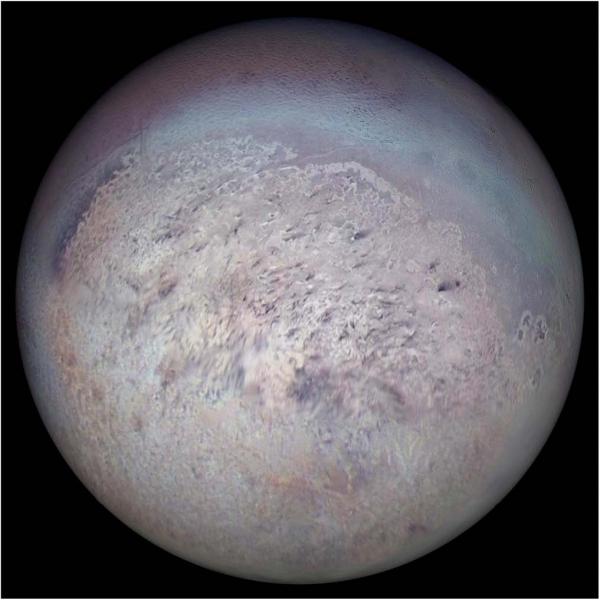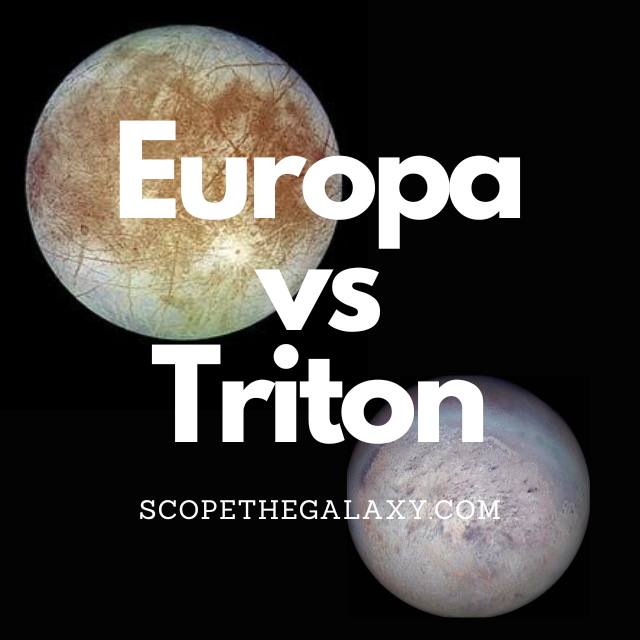*This post may contain affiliate links. This means we may make a commission if you purchase an item using one of our links*
The main differences between Europa and Triton are that Europa is Jupiter’s moon whilst Triton is Neptune’s, Triton orbits in a retrograde motion whilst Europa orbits in the normal counterclockwise direction, Europa has a potential frozen water ocean on its surface and Triton is volcanically active whilst Europa isn’t.
There are numerous other differences between the so, continue reading for a more detailed look at each celestial body along with their similarities and differences below.
What Is The Moon Europa?
Table of Contents

Europa is the smallest of the Galilean moons, first discovered on 8th January 1610. The surface of this icy world is frozen, but scientists believe a watery ocean could lie beneath the surface. And in 2012, researchers found a possible water plume in the Southern polar region of Europa.
This research is yet to be confirmed; still, it gives us reasonable grounds to hypothesize that water could exist on this icy moon.
Estimates place Europa at around 4.5 billion years old (the same age as its planet, Jupiter), and its average distance from the Sun is approximately 780 million km.
It has a diameter of 3,121.6km, which makes it larger than Pluto but smaller than the Earth’s moon, and the maximum temperature is a chilly -160 degrees Celsius. In regards to mass, it measures in around 4.8 × 10^22 kg.
Europa takes three-and-a-half days to orbit its planet at an average distance of 670,900km, and it is tidally locked, meaning the same side of the moon always faces Jupiter.
Among the fascinating features of this ice moon is its incredibly reflective nature. The icy crust of this body provides a light reflectivity of 0.64 – the highest of any moon in the solar system.
Data from the Galileo spacecraft suggests that Europa is composed of an iron core, rocky mantle, and silicate rock (a similar composition to Earth).
The moon’s surface is covered in cracks, which many theorize could result from tidal currents beneath the surface. It is this potential of water – and of life – that keeps astronomers so interested in this moon.
Europa might be small, but astronomers estimate it holds two to three times more water than the Earth. In addition, this moon possesses the essential elements for life, such as carbon, oxygen, hydrogen, and nitrogen.
There may be no solar energy on this moon, but hydrothermal vents could provide energy, and tidal heating from Jupiter could provide a heat source and keep the moon stable enough for life to form. In addition, the liquid ocean is well protected from radiation from thick, icy surfaces.
What Is The Moon Triton?

Triton is the largest moon orbiting Neptune, whose most unusual feature is its retrograde orbit. Triton is the only major moon in our solar system which orbits in the opposite direction of its planet’s rotation.
First discovered on 10th October 1846 (just 17 days after the discovery of its planet, Neptune) by British astronomer William Lassell, “Triton” comes from a merman in Greek myth; a name which perhaps stems from the composition of this faraway moon.
The diameter of Triton is approximately 2,706km, making it a similar size to Earth’s moon. However, we know that its mass is far less than the first estimates suggested because data from Voyager showed that the surface is icy and highly reflective, a less dense composition than the dark surface of our moon.
This icy surface has resulted in ice based natural satellite displaying temperatures in the region of – 235 degrees Celsius.
This lower density stems predominantly from the water-ice interior encasing a denser rock core. Still, the mean density of 2.06 grams per cubic cm remains higher than that of any of Saturn’s or Uranus’ moons. In addition, Triton holds more than 99.5% of the mass of everything that orbits the planet Neptune and its total mass is greater than every smaller satellite in the solar system combined.
Scientists think that Triton may be an object from the Kuiper Belt that Neptune’s gravity captured millions of years ago. This is because it shares many similarities with the dwarf planet Pluto – the best-known world within the Kuiper Belt.
This frozen world is a land of geological oddities with craters and a collection of depressions and ridges known as cantaloupe terrain. The geysers found on this moon shoot plumes of nitrogen as high as 8km high, which creates a thin atmosphere of nitrogen.
In around 3.5 billion years, Triton’s orbit will travel too close to Neptune, and the planet’s gravitational pull will break the moon apart, creating a ring system.
How Are Europa And Triton Similar?
As both are natural satellites, Europa and Triton do share a few similarities, which includes the following:
- Both have a hotter central core.
- Both have a rocky, terrestrial surface.
- Both are spherical in shape.
- Neither have rings surrounding them.
- Both are tidally locked to their planet.
- Both orbit their planet in an elliptical pattern.
- Neither have a magnetic field.
- Neither have tectonic plates.
Differences Between Europa And Triton
As for the differences between the two, they include the following:
- Europa is the 6th largest moon whilst Triton is the 7th as Europa has a diameter of 3,121.6km whereas Callisto has a diameter of 2,706km.
- The average temperature on Triton is -235 degrees Celsius whilst Europa has a temperature of -160 degrees Celsius.
- Triton’s atmosphere is very thin composed of nitrogen with small amounts of methane whilst Europa’s atmosphere is also very thin but composed mostly of oxygen.
- Triton orbits Neptune in a retrograde motion.
- Triton is volcanically active whilst Europa is not.
- Triton is 354,800km away from Neptune on average whilst Europa’s average distance is 442,200km from Jupiter.
- Triton has an albedo/luminosity of around 0.6 – 0.7 whilst Europa has an albedo of 0.64.
- Triton’s gravitational strength is 0.779 m/s² whilst Europa’s gravity is 1.315 m/s².
- Europa has a density of 3.01 g/cm³ whilst Triton’s density is 2.06 g/cm³.
- A day on Europa is 3.5 days whilst a day on Triton takes 5.877 days.
- As both satellites are tidally locked to their planet, it takes them both the same as a day to orbit their planet meaning Triton takes 5.877 days and Europa completes an orbit in 3.5.
- In regards to mass, Triton’s is 2.14 × 10^22 kg whilst Europa’s is 4.8 × 10^22 kg
Summary
Both Europa and Triton share a few features such as their terrestrial composition, the fact both orbit gas giants, have ice present on their surfaces and are tidally locked to their respective planets but, they are still very different from one another.
Whether it be in regards to mass, size, density, their volcanic activity, length of days, water presence and more, Europa and Triton are distinct enough in their own rights to be looked as independent entities as opposed to just another moon orbiting a gas giant.

